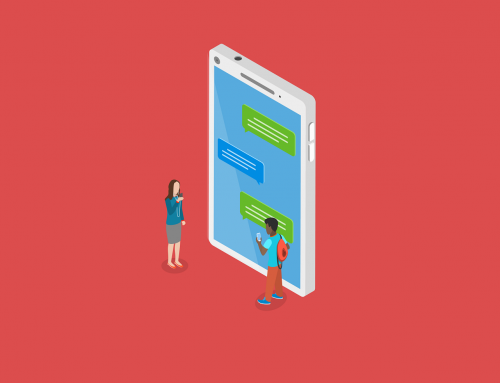Balancing Automated & Human Customer Service
Automation has infiltrated almost every area of the business world in one way or another. Customer service is no exception to this.
The introduction of disruptive automation technology has changed the way that consumers interact with businesses throughout the various steps of the customer journey.
While services such as chatbots, in-app support and social media take pressure off human resources, they don’t always provide the comprehensive customer service management think they provide.
Successful customer service relies on an appropriate balancing act between automated and human customer service.
Automated Customer Service
Automated customer service is a method of consumer support that is provided through an automated system. It cuts costs and helps businesses save time through tools such as a help centres, chatbots or other AI applications.
These tools allow faster and more accurate responses while helping agents to get the job done with ease.
Constant AI platform improvements are resulting in more intelligent and satisfying self-service. Similarly, AI chatbot platforms gather all of the necessary information to allow seamless hand-off to agents.
While live chat is primarily used for e-commerce purposes, it can be used in any industry. Automated customer service can greatly benefit utility and telecommunications companies that receive large amounts of simple billing queries that can be answered timely and with ease.
Gartner estimates that 85% of customer interactions with a company will be handled without any human involvement by 2020.
Human Customer Service
As efficient and engaging automated customer service can be, customers are still drawn to human interaction.
Unlike automated responses, humans can offer humanity and humour. While human customer services definitely costs more, it’s important that a human is always available, especially if it’s necessary for a matter to be escalated.
Forrester indicates that now is the perfect time to invest in humans as the looming backlash against automated customer service is inevitable.
Backlash against automation is often as a result of poor escalation paths to agents. This leads to increased levels of frustration amongst customers. In turn this results in decreased levels of customer satisfaction.
Issues relating to escalation processes can be addressed through creating a more balanced, hybrid approach to automation and human customer service.
The balancing act
1. Only automate where it makes sense
Businesses need to analyse their customers’ behaviour and recognise where they’re benefiting from automation and where human assistance is necessary.
Automation typically works best with simple or repetitive tasks. With simple messaging, automation works well for responding to frequently asked questions.
With the attention taken away from repetitive tasks, human agents can focus on responding to more critical issues customers may be facing.
A chatbot can’t handle every type of conversation. This is especially true for interactions that evoke strong emotions.
If a customer needs to speak to a human agent, the transition from the chatbot needs to be a seamless experience for both the customer and the agent to avoid repetition.
Knowing exactly when and where to offer customers an escalation path to a human agent are critical for providing a great customer experience.
2. Quick follow-up to automated customer service
Speed is an extremely important factor when it comes to delivering a good customer experience. If an automated response can’t effectively solve a customer’s issue, a human response should be available as quickly as possible.
One of the main benefits of automated customer service is that it allows agents to spend more time on follow-ups to more issues. When a company is completely reliant on human customer service, agents will be stuck on repetitive tasks. Because of this, follow-ups won’t be addressed quickly.
However, with an over-reliance on automated responses customers will be satisfied with the response speed, but the poor quality response may cause frustration due to the lack of human interaction.
3. Listen to feedback
Getting the balance right isn’t easy so feedback is your best friend. Gathering the relevant feedback will show decision makers what’s working and what isn’t. Using customer responses to make future decisions and adjustments to the balancing act is essential.
Quality assurance practices and consistent feedback collection ensure management understand how satisfied or unsatisfied customers are.
While automating certain processes can help you to gain a competitive edge, it can often do more harm than good if it’s not balanced appropriately. Getting the balance right can be the difference between a great customer experience and a poor customer experience.
Do you wish to find a customer engagement strategy that best suits your company’s needs? Be sure to contact us today on +353 1 8041298!









